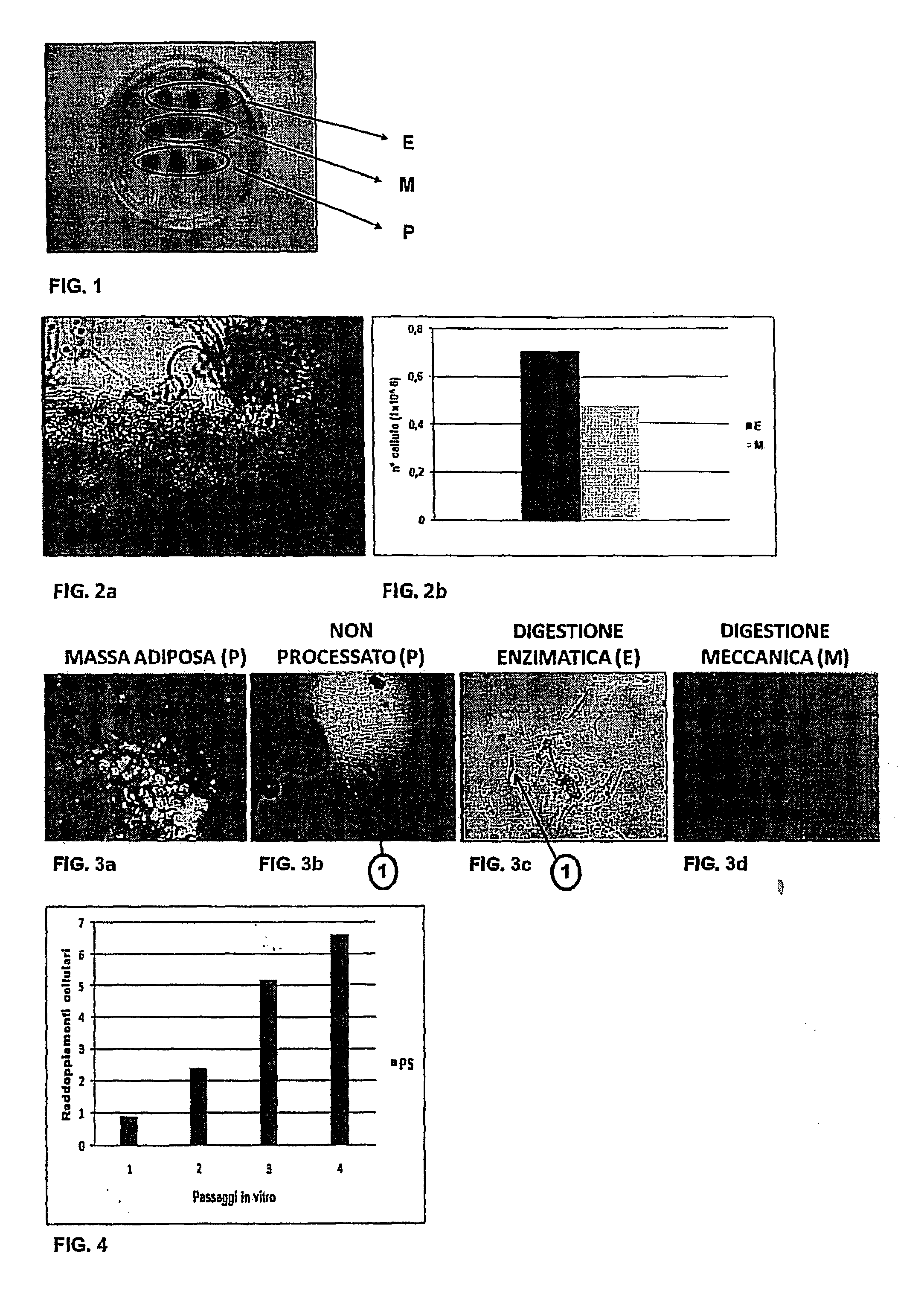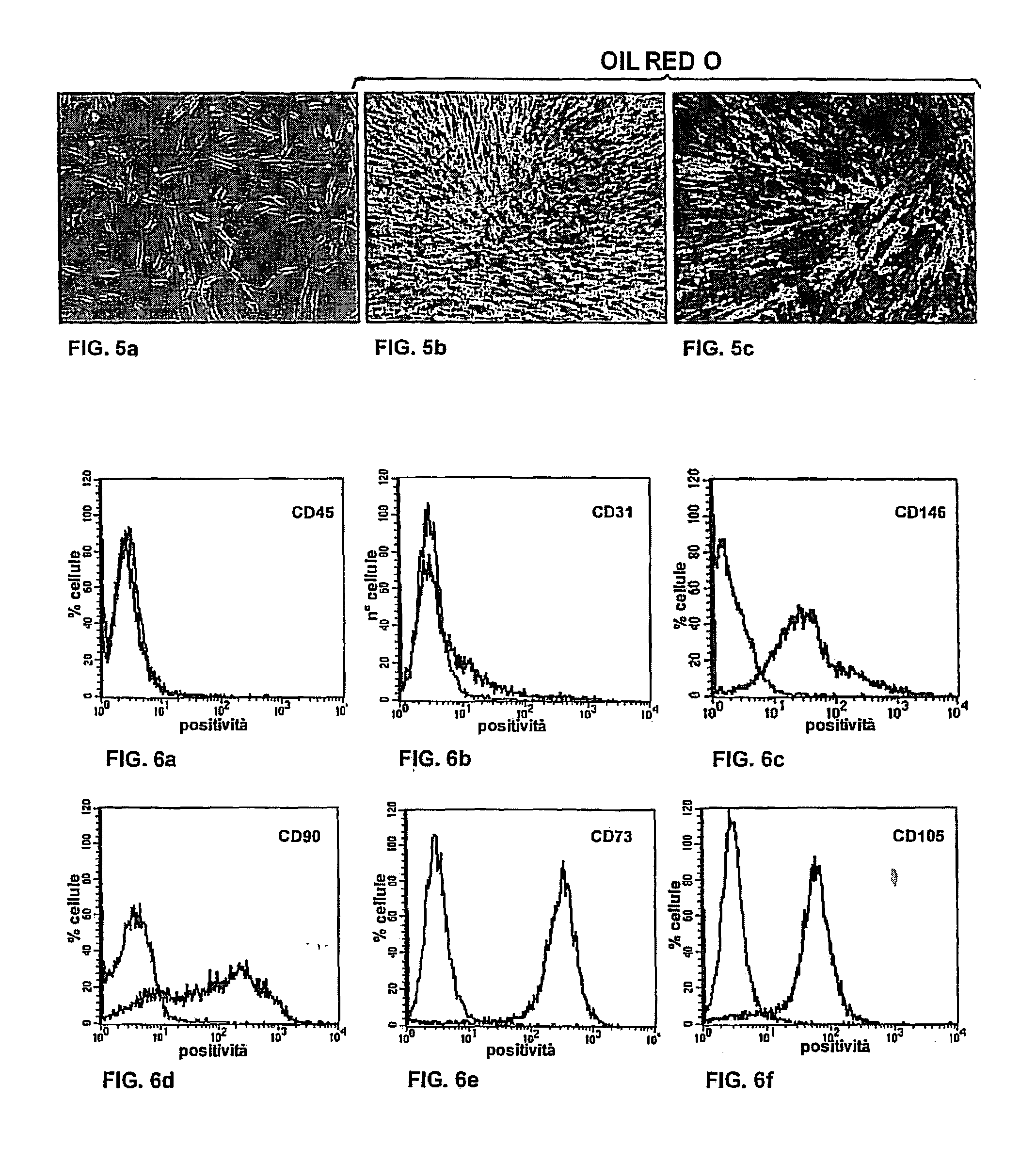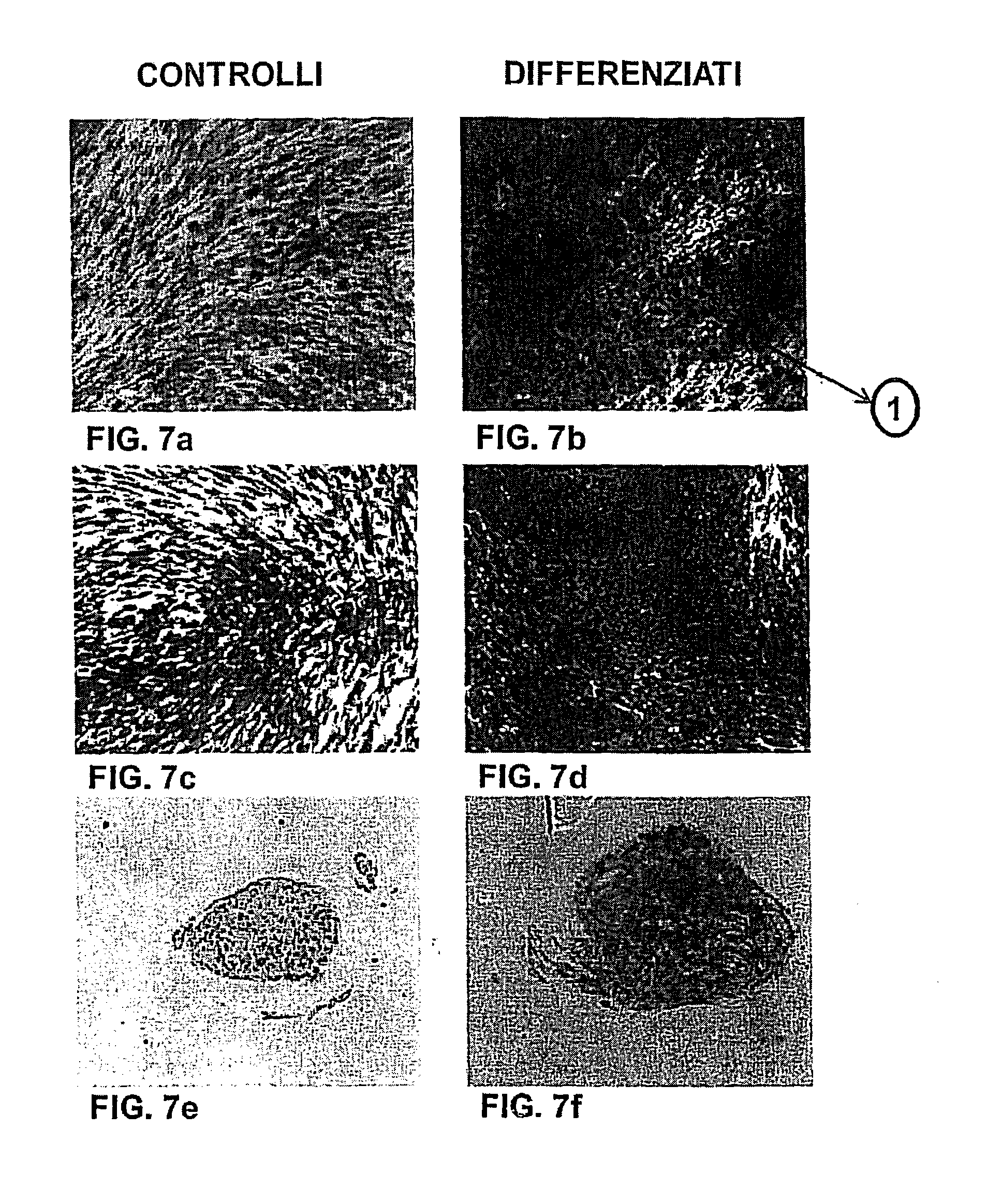Method for obtaining a population of stromal progenitor cells
a technology of stromal progenitor cells and cells, applied in the field of cell population, can solve the problems of limited current state of the art, inability to obtain volumes, and inability to easily access the collection site (the bone marrow) and other problems, to achieve the effect of convenient collection
- Summary
- Abstract
- Description
- Claims
- Application Information
AI Technical Summary
Benefits of technology
Problems solved by technology
Method used
Image
Examples
example 1
[0060]The AT sample was collected from the subcutaneous facial area of a healthy 46-year old female donor by Coleman liposuction. Other methods may be also used for collection.
[0061]The AT fragments were washed three times with a saline solution known as Dulbecco-phosphate buffer solution (D-PBS) added with antibiotic (1 U / mL penicillin, 1 mg / mL streptomycin and 2.5 mg / mL amphotericin B), for an overall time of 15 minutes.
[0062]The last washing step, which was designed to yield a sample with no liquid component, was carried out using a filter (100 μm cell strainer).
[0063]The AT fragments were transferred into a sterile container (petri dish) and divided into nine parts, each having a volume of about 0.025 mL. The latter, as shown in FIG. 1, underwent three different procedures in triplicate: three parts (sample E) underwent the same enzyme digestion process, three parts (sample M) underwent the same mechanical digestion process and finally, the last three parts, designated as sample...
example 2
Immunophenotyping Evaluation
[0085]First a check was made for the presence of any contaminating population, such as endothelial cells and immune system cells, by searching for their respective CD31 and CD45 markers. The SP were found to be negative for CD45 (FIG. 6a) and very weakly positive for CD31 (FIG. 6b).
[0086]At the same time, the SP were found to be positive for progenitor antigens, such as CD90 (FIG. 6d), CD105 (FIG. 6f) and CD73 (FIG. 6e) and to a lesser extent for CD146 (FIG. 6c), as a typical stromal pericyte marker.
example 3
Differentiation Assays
[0087]After phenotyping, osteogenic, chondrogenic and adopogenic differentiation of the SP was performed, at passage 4.
[0088]Osteogenic Differentiation:
[0089]The cells were seeded with a density of 10,000 cells / cm2. After full growth (typically after 2-4 days), they were induced osteogenic differentiation, with one sample being preserved as a control.
[0090]Bone induction was obtained using an appropriate medium, composed of: basal medium (DMEM with 10% fetal calf serum—FCS) dexamethasone, L-ascorbic-2-phosphate acid and β-glycerophosphate.
[0091]Such basal medium was maintained for one week, and replaced every 2-3 days. On the seventh day, or day 7, bone morphogenetic protein-2 was added to the medium. The cells were maintained with the differentiating medium for seven more days, and such medium was replaced every two-three days.
[0092]On the fourteenth day, the differentiation result was assessed by histological assay (Alizarin Red staining). In this assay, the ...
PUM
| Property | Measurement | Unit |
|---|---|---|
| temperature | aaaaa | aaaaa |
| temperature | aaaaa | aaaaa |
| volumes | aaaaa | aaaaa |
Abstract
Description
Claims
Application Information
 Login to View More
Login to View More - R&D
- Intellectual Property
- Life Sciences
- Materials
- Tech Scout
- Unparalleled Data Quality
- Higher Quality Content
- 60% Fewer Hallucinations
Browse by: Latest US Patents, China's latest patents, Technical Efficacy Thesaurus, Application Domain, Technology Topic, Popular Technical Reports.
© 2025 PatSnap. All rights reserved.Legal|Privacy policy|Modern Slavery Act Transparency Statement|Sitemap|About US| Contact US: help@patsnap.com



